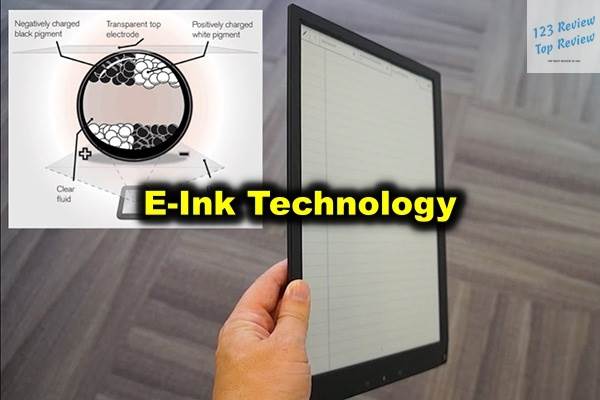E-Ink technology is widely used in e-readers like Amazon’s Kindle due to its ability to provide a paper-like reading experience without the glare or strain associated with traditional backlit screens.
What is E-Ink?
Definition of E-Ink
E-Ink, short for electronic ink, represents a revolutionary display technology that mimics the appearance of traditional ink on paper. Unlike conventional digital screens that rely on backlighting to illuminate pixels, E-Ink technology reflects ambient light, making it a highly comfortable and natural viewing experience, particularly for extended periods. This innovative technology has become synonymous with e-readers like the Amazon Kindle, but its utility extends far beyond this, finding applications in various industries such as retail, education, healthcare, and more. E-Ink displays stand out for their unique characteristics, including exceptional readability under bright light, minimal power consumption, and the ability to hold images without the need for continuous power, which differentiates them from the backlit displays of smartphones, tablets, and computers.

How E-Ink Works
The functioning of E-Ink technology is grounded in the principle of electrophoresis, a process where charged particles suspended in a liquid medium move when subjected to an electric field. These particles are typically black and white pigments encapsulated within microcapsules that are about the diameter of a human hair. When an electric field is applied, the charged particles move within the microcapsule to either the top or bottom, depending on the polarity of the applied voltage. This movement determines whether the surface appears black or white.
The simplicity and effectiveness of this process are what make E-Ink technology so unique. Unlike traditional LCDs or OLED displays, which require continuous power to maintain an image, E-Ink displays are bistable. This means they only require power when the image is changing. Once an image is set, no additional energy is needed to keep it displayed. This fundamental property allows E-Ink devices, such as e-readers, to last for weeks or even months on a single battery charge, providing unparalleled convenience and efficiency.
Key Components of E-Ink Technology
E-Ink technology comprises several key components that work together to create its distinct display capabilities. The primary components include microcapsules, electrodes, and a supporting substrate.
- Microcapsules: The heart of E-Ink technology lies in its microcapsules, each containing millions of charged black and white pigment particles suspended in a clear fluid. These microcapsules are embedded in a polymer layer and are critical to the display’s ability to show different shades of gray.
- Electrodes: These are responsible for creating the electric fields that move the charged pigment particles within the microcapsules. The electrodes are arranged in layers, with the top layer being transparent, allowing the viewer to see the display, and the bottom layer controlling the electric field’s polarity.
- Substrate: The substrate is the material that holds the microcapsules and electrodes in place. It is usually a thin, flexible film, which allows E-Ink displays to be both lightweight and durable. The flexibility of the substrate has also enabled the development of flexible E-Ink displays, which can be bent or curved, opening up new possibilities for wearable technology and innovative form factors.
These components work in unison to create a display that is not only energy-efficient but also highly readable, even in direct sunlight. The simplicity and effectiveness of these components have allowed E-Ink to become a staple in various applications where readability, durability, and low power consumption are critical.
The Mechanism Behind E-Ink
Electrophoresis in E-Ink
The process of electrophoresis is central to the operation of E-Ink displays. Electrophoresis is a phenomenon where charged particles move through a medium when an electric field is applied. In the context of E-Ink, these charged particles are the black and white pigments within the microcapsules. The white particles carry a positive charge, while the black particles carry a negative charge. When an electric field is applied across the electrodes, it causes these particles to move within the microcapsules, resulting in either a white or black appearance on the display.
This movement is controlled with precise voltages that direct the particles to either the top (visible side) or the bottom (hidden side) of the microcapsule. When the white particles are at the top and the black particles at the bottom, the surface appears white, and vice versa. This ability to control the placement of particles with electric fields allows E-Ink displays to form text and images.
Moreover, E-Ink displays can create different shades of gray by varying the voltage applied, which mixes the black and white particles in varying proportions. This gray scale capability is essential for displaying detailed images and smooth text, making E-Ink suitable for e-readers and other devices where clarity and readability are paramount.
Bistable and Reflective Properties
Two of the most distinctive properties of E-Ink displays are their bistability and reflectivity. Bistability refers to the display’s ability to maintain an image without needing continuous power. Once the charged particles have been moved to create an image, they remain in place until another electric field is applied to change the image. This property is a key factor behind the low power consumption of E-Ink displays, as they only require energy when the content is being updated.
Reflectivity, on the other hand, pertains to how E-Ink displays use ambient light to render images. Unlike traditional displays that emit light towards the viewer, E-Ink screens reflect light just like paper. This reflective property makes E-Ink displays highly readable in bright light conditions, such as outdoors in direct sunlight, without the glare or washout that can affect LCDs or OLEDs.
The combination of these properties makes E-Ink displays particularly eye-friendly. Since they do not emit light directly, they reduce the risk of eye strain and are more comfortable for long-term reading or viewing. This has contributed to their popularity in e-readers and other devices where prolonged use is common.
Comparison with Traditional Displays
When compared to traditional displays like LCDs and OLEDs, E-Ink technology offers a fundamentally different approach to image rendering. Traditional displays rely on active backlighting to create and maintain images, which results in higher power consumption and potential discomfort due to emitted blue light. E-Ink, in contrast, relies solely on ambient light, making it far more energy-efficient and comfortable for the eyes.
However, E-Ink displays do have some limitations. They generally have slower refresh rates, which can make them unsuitable for applications involving video playback or animations. Additionally, while there have been advancements in color E-Ink technology, the color range and saturation still do not match that of traditional displays. Despite these limitations, the advantages of E-Ink in terms of power efficiency, readability, and eye comfort make it the preferred choice for specific applications, particularly those focused on reading and static image display.
Applications of E-Ink Technology
E-Readers and E-Books
Perhaps the most well-known application of E-Ink technology is in e-readers, such as the Amazon Kindle, Kobo, and Nook. E-Ink’s ability to mimic the appearance of printed text on paper makes it the ideal technology for digital reading. The experience is akin to reading a physical book, with the added benefits of digital convenience, such as adjustable font sizes, built-in dictionaries, and the ability to carry thousands of books in one device.
E-Ink’s low power consumption is another significant advantage in e-readers. Because the display only uses power when changing pages, devices can last for weeks or even months on a single charge. This feature is especially appealing to readers who prefer long, uninterrupted reading sessions without the constant worry of battery life.
Furthermore, the lack of blue light emission makes E-Ink displays more comfortable for prolonged reading, reducing eye strain and making them suitable for late-night reading without disrupting sleep patterns. The success of e-readers has helped popularize E-Ink technology and has driven further innovations in the field, including the development of larger E-Ink screens for professional and academic use.
Electronic Shelf Labels (ESLs)
In the retail industry, E-Ink technology has found a significant application in Electronic Shelf Labels (ESLs). These labels, used by stores to display product prices, promotions, and other critical information, can be updated remotely and automatically, ensuring accuracy and efficiency in inventory management. Unlike traditional paper labels that require frequent replacement, ESLs can be updated in real-time, reducing waste and labor costs.
The bistable nature of E-Ink displays makes them particularly well-suited for ESLs. Since the labels only consume power when updating, they can operate for long periods on a single battery or even use energy-harvesting technologies, such as solar panels. This energy efficiency, combined with the ability to reflect light and remain readable under various lighting conditions, has made ESLs a popular choice in modern retail environments.
Additionally, the flexibility and durability of E-Ink displays allow them to be used in various forms and shapes, from traditional rectangular labels to more innovative designs that can wrap around shelves or products. This versatility has opened new possibilities for dynamic pricing, promotional strategies, and enhanced customer engagement in retail settings.
Digital Signage Solutions
E-Ink technology is also gaining traction in the digital signage industry, particularly in environments where readability under bright lighting conditions is crucial. Traditional digital signs, which rely on backlighting, can struggle with visibility in direct sunlight or well-lit areas. In contrast, E-Ink displays excel in these situations due to their reflective properties, making them an ideal choice for outdoor signage, transportation hubs, and public information boards.
Digital signage powered by E-Ink is not only highly readable but also energy-efficient. Since E-Ink displays do not require continuous power to maintain an image, they can significantly reduce operational costs compared to traditional digital signage solutions. This is particularly beneficial for installations in remote locations or areas with limited access to power.
Furthermore, E-Ink’s ability to maintain an image without power makes it a reliable choice for critical information displays, such as emergency notifications or public transportation schedules, where uptime and clarity are paramount. The growing adoption of E-Ink in digital signage is expanding the technology’s reach beyond consumer electronics, showcasing its versatility and potential in various industries.
Wearable Devices
Wearable technology is another area where E-Ink displays are making an impact. The lightweight, flexible nature of E-Ink screens, combined with their low power consumption, makes them ideal for wearable devices such as smartwatches, fitness trackers, and even electronic jewelry. These devices benefit from E-Ink’s ability to display information clearly in various lighting conditions, from bright sunlight to dim indoor environments.
For instance, smartwatches equipped with E-Ink displays can offer extended battery life compared to those with traditional OLED or LCD screens. This is because the E-Ink display only uses power when the information on the screen changes, allowing the device to remain functional for days or even weeks on a single charge. This extended battery life is a significant advantage for users who require constant access to information without frequent recharging.
Moreover, the flexibility of E-Ink displays enables the creation of innovative wearable designs that are both comfortable and functional. E-Ink’s ability to conform to different shapes and surfaces has inspired new wearable form factors, from curved wristbands to flexible display patches that can be worn on the skin. This adaptability has the potential to drive further innovation in the wearable technology space, offering new possibilities for both fashion and function.
Medical Devices
E-Ink technology is also being explored in the medical field, where its low power consumption and high readability can offer significant advantages. One promising application is in patient monitoring devices, where E-Ink displays can provide clear, easily readable information without the need for constant power. This feature is particularly valuable in portable medical devices that need to operate for extended periods on battery power.
E-Ink displays are also being used in medical records and information systems, where their ability to display text and graphics in high contrast makes them ideal for critical data that must be readable in various lighting conditions. For example, electronic labels on medication packaging or hospital wristbands can ensure that important information, such as dosage instructions or patient identification, is always visible and legible.
The durability and flexibility of E-Ink displays also make them suitable for use in medical environments, where devices must withstand rigorous use and cleaning protocols. As the healthcare industry continues to embrace digital solutions, E-Ink technology is likely to play an increasingly important role in enhancing patient care and improving the efficiency of medical devices and systems.
Advantages and Challenges of E-Ink Technology
Advantages
E-Ink technology offers several distinct advantages that make it appealing across various applications:
- Energy Efficiency: E-Ink displays are highly energy-efficient because they only consume power when changing the image. This bistability allows devices to operate for extended periods on a single charge, making E-Ink ideal for applications where battery life is crucial, such as e-readers and wearable devices.
- Readability: E-Ink displays provide excellent readability in various lighting conditions, including bright sunlight. Their reflective nature, which mimics the appearance of ink on paper, reduces glare and eye strain, making them more comfortable for prolonged use.
- Durability: E-Ink displays are typically more durable and flexible than traditional displays. This makes them well-suited for use in environments where displays may be subject to physical stress or require a flexible form factor, such as in wearables or rugged devices.
- Low Environmental Impact: The energy efficiency and durability of E-Ink displays contribute to a lower environmental impact. Devices with E-Ink screens often require fewer resources to operate and maintain, and their long lifespan reduces the need for frequent replacements.
- Versatility: E-Ink technology is versatile, with applications ranging from e-readers and electronic shelf labels to digital signage and medical devices. This adaptability has allowed E-Ink to penetrate multiple industries, offering unique solutions to various challenges.
Challenges
Despite its many advantages, E-Ink technology also faces several challenges:
- Slow Refresh Rates: One of the primary limitations of E-Ink displays is their slower refresh rates compared to LCDs and OLEDs. This makes them less suitable for applications involving video playback or fast-moving graphics, limiting their use in certain areas.
- Limited Color Range: While advancements have been made in color E-Ink displays, they still do not match the vibrant colors and saturation of traditional displays. This limitation can be a drawback in applications where color fidelity is essential, such as in photography or media consumption.
- Higher Initial Costs: E-Ink displays can be more expensive to produce than traditional displays, leading to higher initial costs for devices that use them. However, the long-term savings in energy and durability often offset these costs, particularly in applications where these factors are critical.
- Temperature Sensitivity: E-Ink displays can be sensitive to extreme temperatures, which may affect their performance in certain environments. This limitation requires additional considerations in the design and deployment of E-Ink-based devices, particularly for outdoor or industrial applications.
- Niche Applications: While E-Ink has found success in specific applications like e-readers and electronic shelf labels, its adoption in other areas has been slower. The technology’s limitations in refresh rates and color range mean it is best suited for niche markets rather than mass-market consumer electronics.
Future Prospects of E-Ink Technology
Ongoing Research and Development
The future of E-Ink technology is bright, with ongoing research and development focused on overcoming its current limitations and expanding its applications. One area of active development is in improving the refresh rates of E-Ink displays, making them more suitable for dynamic content such as video. Researchers are also exploring new ways to enhance the color capabilities of E-Ink, potentially bringing it closer to the vividness of traditional displays while maintaining its energy efficiency and readability.
Another exciting area of research is in the development of flexible and foldable E-Ink displays. These innovations could lead to new form factors for devices, such as rollable e-readers or wearable displays that conform to the body’s contours. The potential for flexible E-Ink displays to revolutionize the design of electronic devices is vast, offering new possibilities for portability, durability, and user interaction.
Expansion into New Markets
As E-Ink technology continues to evolve, its potential applications are likely to expand into new markets. In the retail sector, for example, E-Ink could be used for dynamic pricing displays, allowing stores to adjust prices in real-time based on demand, competition, or inventory levels. This capability could significantly enhance retail efficiency and customer engagement, making shopping experiences more personalized and responsive.
In the education sector, E-Ink displays could be used for digital textbooks and note-taking devices that offer the convenience of digital content with the readability and comfort of traditional paper. This could transform the way students interact with educational materials, reducing the need for physical textbooks and enhancing the learning experience.
The healthcare industry is another area where E-Ink technology could see significant growth. As medical devices become more portable and patient-centric, the need for displays that are both energy-efficient and highly readable will increase. E-Ink’s unique properties make it well-suited for applications such as patient monitoring, electronic medical records, and wearable health devices.
Challenges and Opportunities
While the future of E-Ink technology is promising, several challenges must be addressed to fully realize its potential. Improving the refresh rates and color capabilities of E-Ink displays will be critical to expanding their use in more dynamic and visually demanding applications. Additionally, reducing the cost of E-Ink displays will be necessary to make them more competitive with traditional display technologies in the mass market.
However, these challenges also present opportunities for innovation and growth. As research and development efforts continue, E-Ink technology is likely to become more versatile and accessible, opening new markets and applications. The potential for E-Ink to revolutionize industries such as retail, education, healthcare, and consumer electronics is vast, and the ongoing advancements in the technology suggest a bright future ahead.
Conclusion
E-Ink technology has come a long way since its inception, evolving from a novel display technology to a critical component in various applications across different industries. Its unique combination of energy efficiency, readability, durability, and versatility has made it a preferred choice for specific use cases, particularly in e-readers, retail, and medical devices. As research and development continue to push the boundaries of what E-Ink can achieve, the technology’s future looks promising, with the potential to revolutionize new markets and applications.
However, challenges remain, particularly in improving refresh rates, color capabilities, and reducing costs. Overcoming these obstacles will be key to expanding E-Ink’s adoption and unlocking its full potential. As the technology continues to evolve, E-Ink is poised to play an increasingly important role in the digital landscape, offering a unique and innovative solution for displays that prioritize energy efficiency, readability, and user comfort. Whether through flexible displays, dynamic pricing in retail, or enhanced medical devices, the future of E-Ink technology is full of exciting possibilities.





